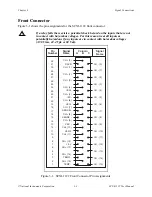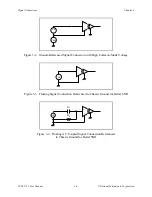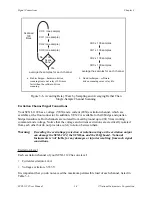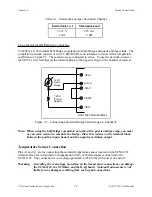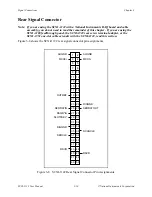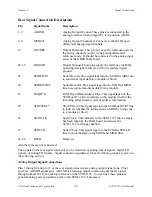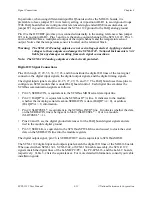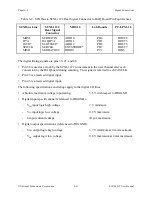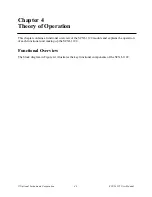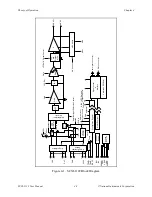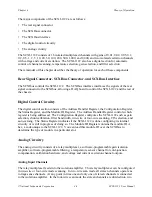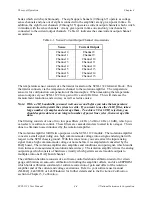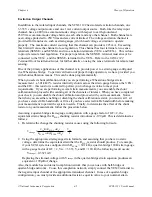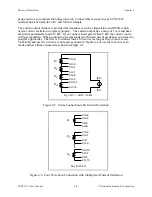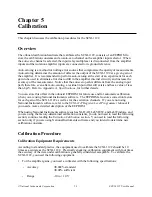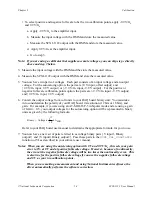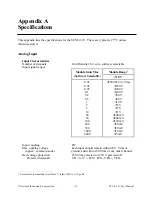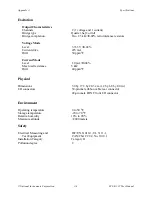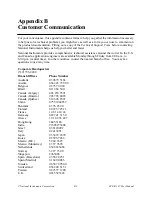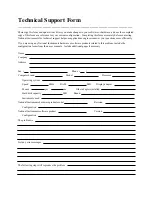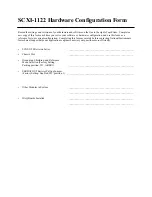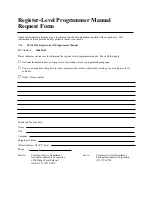
Theory of Operation
Chapter 4
SCXI-1122 User Manual
4-4
© National Instruments Corporation
banks which switch synchronously. The eight upper channels (0 through 7) operate as voltage
sense channels and one out of eight is connected to the amplifier at any given point in time. In
addition, the eight lower channels (8 through 15) operate as current output channels which switch
in tandem with the sense channels. At any given point in time one and only one channel is
connected to the current output channels. Table 4-1 indicates the sense/current output channel
associations.
Table 4-1. Sense/Current Output Channel Associations
Sense
Current Output
Channel 0
Channel 8
Channel 1
Channel 9
Channel 2
Channel 10
Channel 3
Channel 11
Channel 4
Channel 12
Channel 5
Channel 13
Channel 6
Channel 14
Channel 7
Channel 15
The temperature sensor consists of a thermistor located on the SCXI-1322 terminal block. This
thermistor connects via the temperature channel to the isolation amplifier. The temperature
sensor is for cold junction compensation of thermocouples. When measuring the temperature
sensor output, set your SCXI-1122 for a gain of five and 4 Hz filter. This will increase the
measurement resolution and accuracy as well as reduce noise.
Note: With a 4 Hz bandwidth you must wait one second before you take the temperature
measurement to permit the system to settle. If you want to use the 4 kHz filter, take a
large number of samples and average them. To achieve 50 or 60 Hz rejection, you
should acquire data over an integral number of power line cycles, then average this
data.
The filtering consists of one of two low pass filters, 4 kHz (-3 dB) or 4 Hz (-10 dB), which you
can select via software control. These filters are cascaded and are located in two stages. This is
done to eliminate noise introduced by the isolation amplifier.
The isolation amplifier fulfills two purposes on the SCXI-1122 module. The isolation amplifier
converts a small signal riding on a high common-mode voltage into a single-ended signal with
respect to the SCXI chassis ground. With this conversion, you can extract the input analog
signal from a high common-mode voltage or noise before it is sampled and converted by the
DAQ board. The isolation amplifier also amplifies and conditions an input signal, which results
in an increase in measurement resolution and accuracy. The isolation amplifier drives the analog
output stage which consists of hardware circuitry which permits several module outputs to
multiplex into one DAQ board channel.
The calibration hardware consists of a software-controlled shunt calibration resistor for strain
gauge calibration, an auto-zero calibration for nulling the amplifier offsets, and of an EEPROM
which holds calibration constants for software correction of gain and offset of the isolation
amplifier and of the current and voltage excitations. Refer to your software user manual
(NI-DAQ, LabVIEW, or LabWindows) for further details and to the Excitation Calibration
section in Chapter 5, Calibration.

